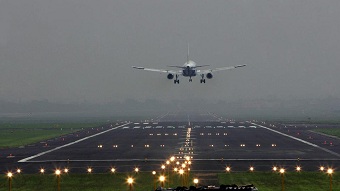With more than 100 languages and the ambition to connect even its smallest villages by air, India has become a testing ground for a new software being developed by Honeywell International Inc. that aims to make it easier to understand pilots speaking English with strong local accents.
Honeywell is, at the behest of the government, developing software that will decipher accents and automatically transcribe what’s said for air traffic controllers. The move will enhance safety at a time when Prime Minister Narendra Modi’s push to add smaller airports to the world’s fastest-growing major market has increased the demand for pilots who could be speaking in a thick accent, thanks to more than 6,000-odd dialects spoken across the country.
“One of the biggest problems in India has been that we Indians don’t understand each other’s English because of the dialects,” Neelu Khatri, who heads Honeywell International Inc.’s aerospace business in India, said. “This, we thought, works very well for the regional connectivity scheme, because you have regional pilots coming in, people don’t know what he said and what he understood.” Miscommunication between air traffic controllers and pilots is a safety threat globally. A fatal 1996 crash between a Saudi Boeing 747 and the Kazakh Ilyushin-76 near New Delhi, which killed 349, was primarily blamed on a language barrier, involving pilots whose first language wasn’t English.
While the project is first being implemented in India, Honeywell sees scope to expand the offering to other parts of the world, Khatri said, without giving further details. The company’s engineering prowess in India allows it to customize products that cater to local needs, rather than push solutions from its global portfolio. The Morris Plains, New Jersey-based firm employs more than 3,000 engineers in India, with centres in southern Indian cities of Hyderabad, Bengaluru and Madurai. It is working on the transcription project with state-run Airports Authority of India, Khatri said. A spokesman for AAI, which manages about 125 airports, said he wasn’t aware of the development.








